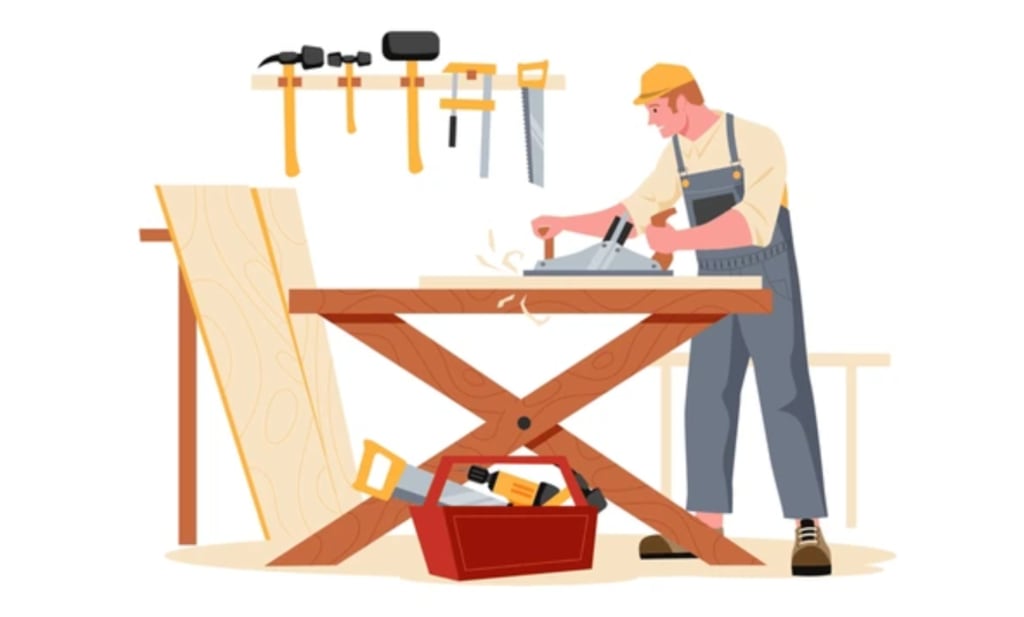Tips for Setting Up a Woodworking Shop
Setting up your first woodworking shop

### Setting Up Your Dream Woodworking Workshop: A Guide for Beginners
Woodworking is more than just a hobby; it's a craft that allows you to create functional pieces of art with your own hands. Whether you're a novice or a seasoned enthusiast, having a well-equipped and organized workshop is essential for enjoyable and productive woodworking. Here's a comprehensive guide to setting up your dream woodworking workshop:
#### 1. **Choose the Right Space**
The first step in setting up a woodworking workshop is selecting the right space. Ideally, you'll want a location that offers enough room for your tools and materials, adequate ventilation, and good lighting. A garage, basement, or dedicated shed can work well. Ensure the space is well-ventilated to handle dust and fumes from woodworking.
#### 2. **Essential Tools and Equipment**
Investing in quality tools is crucial for woodworking success. While the specific tools you need will depend on your projects, some essential items include:
- **Workbench:** A sturdy workbench is the heart of any woodworking shop. Choose one that's flat, stable, and large enough for your projects.
- **Power Tools:** Start with basics like a circular saw, jigsaw, drill press, and router. As you progress, consider adding more specialized tools like a table saw, planer, and jointer.
- **Hand Tools:** Don't overlook hand tools like chisels, hand planes, clamps, and a good set of measuring tools. These are essential for fine-tuning and detail work.
#### 3. **Organization and Storage**
Keep your workshop organized to maximize efficiency and safety:
- **Tool Storage:** Install wall-mounted racks, pegboards, or cabinets to store and organize your tools. This keeps them easily accessible and reduces clutter on your work surfaces.
- **Material Storage:** Have a designated area for storing wood and other materials. Keep lumber off the ground to prevent warping and moisture damage.
#### 4. **Safety First**
Woodworking involves sharp tools and machinery, so prioritize safety:
- **Safety Gear:** Always wear safety glasses, ear protection, and a dust mask or respirator. Consider a shop apron and gloves for added protection.
- **Fire Safety:** Keep a fire extinguisher handy and ensure electrical outlets are grounded and in good condition.
#### 5. **Workshop Layout**
Plan your workshop layout for workflow efficiency:
- **Flow:** Arrange your tools and workbench in a logical order to minimize movement during projects.
- **Power Access:** Ensure easy access to power outlets for your tools and machinery, and consider installing additional outlets if needed.
#### 6. **Personal Touches**
Make your workshop a comfortable and inspiring space:
- **Lighting:** Invest in bright, task-oriented lighting to reduce eye strain and improve visibility.
- **Inspiration Board:** Display sketches, project ideas, or inspirational quotes to keep yourself motivated.
#### 7. **Continuous Improvement**
Lastly, remember that your workshop will evolve over time. As you gain experience and tackle new projects, you'll discover what tools and setups work best for you. Be open to making adjustments and improvements based on your needs and preferences.
Setting up a woodworking workshop is an exciting journey that allows you to unleash your creativity and craftsmanship. By following these steps and investing in quality tools and organization, you'll create a space where woodworking becomes not just a hobby, but a fulfilling passion. Happy woodworking!
### Selecting the Perfect Space for Your Woodworking Workshop: A Beginner's Guide
Setting up a woodworking workshop is a thrilling endeavor, whether you're embarking on it as a hobbyist or envisioning a professional setup. One of the critical initial decisions you'll face is choosing the right space for your workshop. This decision can significantly impact your comfort, productivity, and the overall enjoyment of woodworking. Here’s a comprehensive guide to help you navigate this important first step:
#### 1. **Evaluate Your Needs**
Before diving into space considerations, take some time to assess your woodworking needs:
- **Workspace Size:** Consider the scale of projects you plan to undertake. A small workshop might suffice for small furniture pieces or crafts, while larger projects like cabinetry or woodworking with large power tools will require more space.
- **Storage Requirements:** Factor in the amount of storage space you'll need for materials, tools, and finished projects.
- **Noise and Ventilation:** Woodworking can generate noise and dust. Think about ventilation requirements and how noise might affect others if your workshop is close to living spaces.
#### 2. **Location, Location, Location**
Once you've determined your needs, consider where to locate your workshop:
- **Indoors vs. Outdoors:** Indoor spaces like basements or garages offer shelter from the elements and easier access to utilities. Outdoor workshops, such as sheds or dedicated outbuildings, provide more space flexibility and may offer better ventilation.
- **Accessibility:** Choose a location that is easily accessible. You'll want to transport materials and finished projects in and out efficiently.
- **Utilities:** Ensure your chosen space has access to electricity for powering tools and lighting. If necessary, consider the cost and feasibility of adding additional outlets or upgrading electrical capacity.
#### 3. **Environmental Factors**
Pay attention to environmental conditions that can affect your woodworking:
- **Temperature and Humidity:** Fluctuations in temperature and humidity can impact wood stability and tool performance. Choose a space with climate control if possible, or consider using dehumidifiers or heaters to maintain stable conditions.
- **Natural Light:** Natural light can enhance your workspace and reduce the need for additional lighting during the day. Consider windows or skylights when selecting your workshop space.
#### 4. **Safety Considerations**
Prioritize safety when choosing your workshop space:
- **Ventilation:** Proper ventilation is crucial for removing dust and fumes generated during woodworking. If working indoors, ensure there are windows or an exhaust system to maintain air quality.
- **Fire Safety:** Woodworking involves tools that generate heat and sparks. Ensure your workshop space is equipped with a fire extinguisher and free of flammable materials.
#### 5. **Space Layout and Organization**
Visualize how you'll organize your workshop:
- **Work Zones:** Plan separate zones for different woodworking tasks, such as cutting, assembly, and finishing.
- **Storage Solutions:** Incorporate shelves, cabinets, and tool racks to keep your workspace organized and maximize efficiency.
#### 6. **Future Expansion**
Anticipate future needs as your woodworking skills and projects evolve:
- **Flexibility:** Choose a space that allows for future expansion or modification as your workshop requirements change.
- **Noise Control:** If noise is a concern, consider soundproofing measures such as insulation or acoustic panels.
#### 7. **Personal Comfort and Inspiration**
Finally, create a space that inspires creativity and comfort:
- **Personal Touches:** Add personal touches like artwork, motivational quotes, or plants to make your workshop feel welcoming and inspiring.Ultimate Small Shop review
- **Comfort:** Invest in a comfortable workbench and ergonomic tools to reduce strain during long woodworking sessions.
Choosing the right space for your woodworking workshop is a foundational step in creating a space where your creativity can thrive. By considering your needs, environment, and safety requirements, you can set the stage for a fulfilling woodworking journey ahead.
About the Creator
peter
Content about cars, motorbikes, technology, news
Enjoyed the story? Support the Creator.
Subscribe for free to receive all their stories in your feed. You could also pledge your support or give them a one-off tip, letting them know you appreciate their work.






Comments
There are no comments for this story
Be the first to respond and start the conversation.